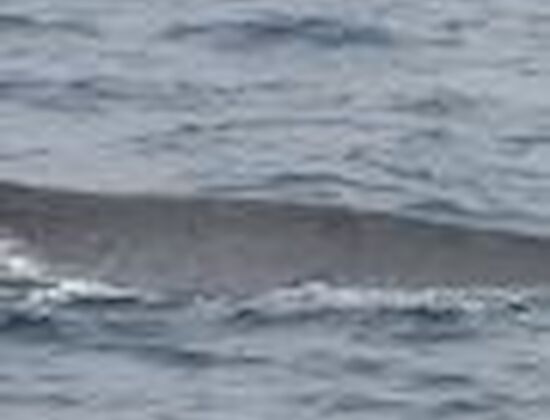Satellite tag deployed on Antarctic blue whale
One of the scientific objectives of the blue whale voyage is to track the movements of Antarctic blue whales using satellite tags – something which has never been achieved before. This is a huge challenge, requiring clement weather and calm, cooperative whales. Once deployed, the tags transmit the position of the whale to the Argos satellite system, providing researchers with valuable information on the continuous movement of these rare whales.
Today the inflatable boat was launched from the ship after visual observations confirmed that there were four Antarctic blue whales nearby. There’s a team of five on the small boat, a coxswain (driver), and then four others to deploy tags, collect biopsies, take photographs and record data.
The tagger this time was Virginia Andrews-Goff who described the process of tagging the whale; ‘This was a big chance and I was acutely aware of the expectations. We bounced along trying to keep pace with this fast moving whale.
I aimed carefully just as the whale surfaced alongside the boat. Time seemed to slow as I spotted the perfect site for the tag. For optimal performance, the tag should be forward on the body, just in line with the pectoral fin. To my relief I deployed the tag in a great spot.’
The biopsy dart also found its mark and remarkably bounced right back into the boat. This completed a fantastic trifecta: photo identification, biopsy and a satellite tag, all with the same whale that we named "Markus" after the son of Explorer's second mate.
The tag has been transmitting well so far but tagging can be fickle and it could stop transmitting at any time. If we are lucky and the tag transmits for many months then it would provide important information on the movements of blue whales between their breeding and feeding ground - a significant contribution to the conservation and management of Antarctic blue whales.
Catch up on previous posts from the voyage.



